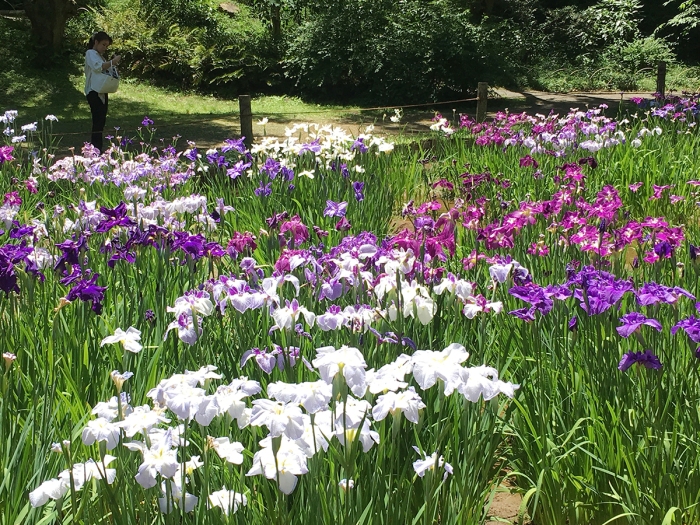
Irises are in full bloom in June
Meiji Jingu Shrine is one of the most popular tourist spots in Tokyo. The entrance is right outside of the busy JR Harajuku train station, you can get into a huge green forest dedicated to the ancient Japanese gods.
The gods enshrined in Meiji Jingu is Emperor Meiji and Empress Shoken. The place used to be a residential palace for samurai lords or Imperial family, and the Empress enjoyed walking in the garden, where many irises bloom in June.
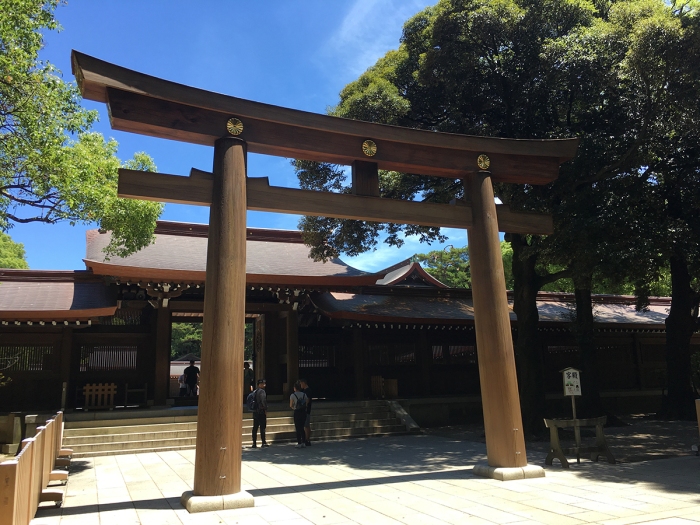
Torii Gate at the entrance
Shrines have “Torii Gate” at the entrance, which divides “that world” from “this world” and there’s a certain way to enter the gate. Before passing through, bow slightly and go on the right or left side of the way, because the center must be reserved for the deities.
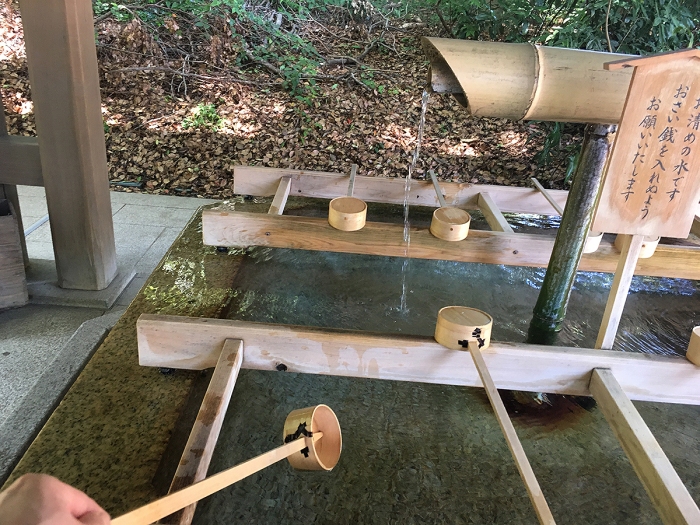
Purify yourself at water basin
Before coming to the mail hall, you’ll always find a water basin, Chozu-ya. Here, you have to purify yourself, since you are about to sacred gods.
1. Grab one of the wooden ladles with your right hand. Fill it with water.
2. Wash your left hand. Then, take the ladles with your left and wash right.
3. Pour water into your left hand and sip a little, cleanse your mouth, spit it at the bottom of the basin.
!! Do not put your mouth to the ladle. Always from your hand.
!! Do not drink. Spit it out.
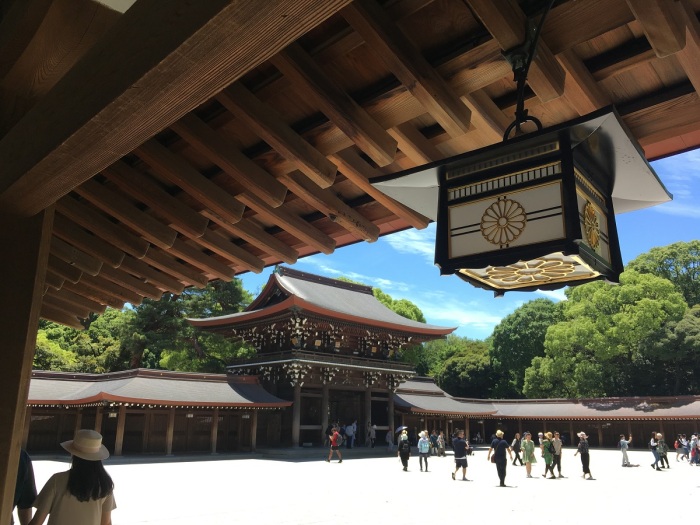
Courtyard with main hall
In Shinto, the Japanese original religion, gods are not represented by statues of paintings. Usually we can find it as a piece of paper (Shide) or a branch of tree (Sakaki).
1. Stand in front of the hall and ring the bell two or three times, to let the gods notice you.
2. Bow twice.
3. Clap your hands twice.
4. Put your palms together and pray.
5. Bow once and leave.
And throw coins into the box if you like as a donation.
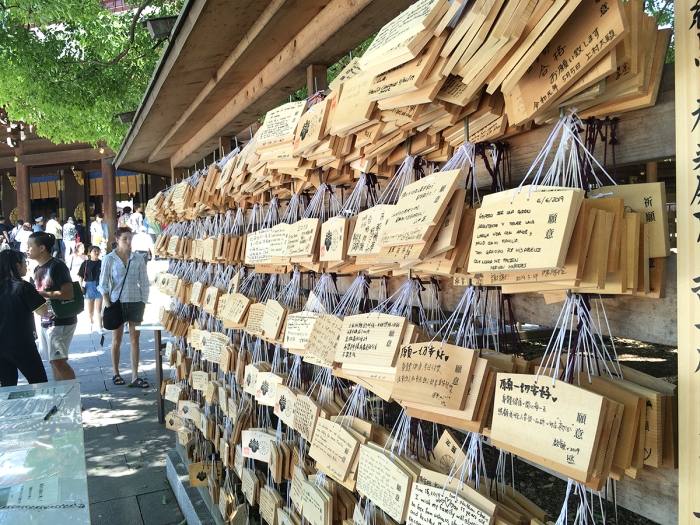
Ema, write your wish on a wooden plaque and hang
If you write your wish on Ema, a wooden plaque with a horse picture, you can be further closer for success. In ancient times, real horses were donated to shrines, and it transformed to small wooden plaques so that everyone can join (Yes, it costs you, of course).
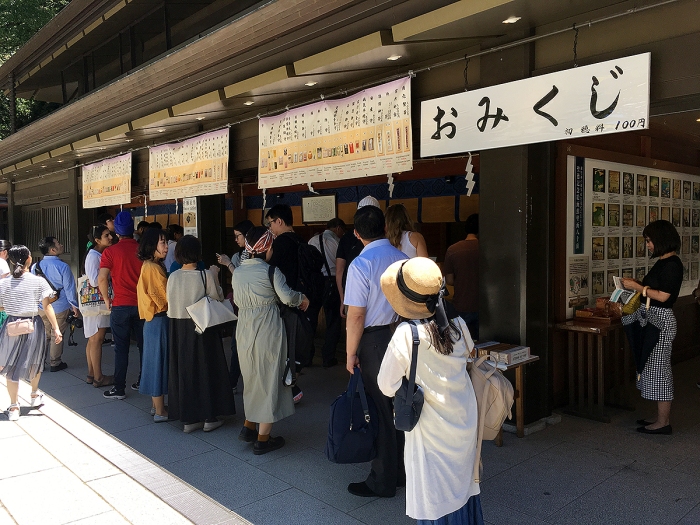
Omikuji, fortune telling
Omikuji, fortune telling is another fun attraction to visit a shrine. You’ll buy a piece of paper and your fortune is written on it. Unlike other shrines, Omikuji in Meiji Shrine is not just about “good” or “bad” luck, it has poems of Meiji Emperor and Empress, which is giving good advice on your life, and it has an English version too!
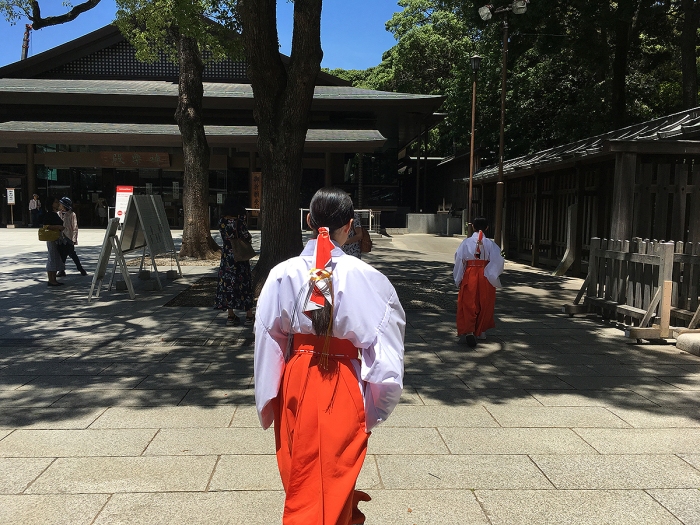
Miko-san, ladies working in shrine
In Shinto, many of the priests are men, and some ladies working as “Miko”, gods’ girls, can be seen in shrines. Miko used to be women who could listen to gods voices, but currently, Mikos are assistants to do various jobs in the shrine, it can be a part-time job for students.
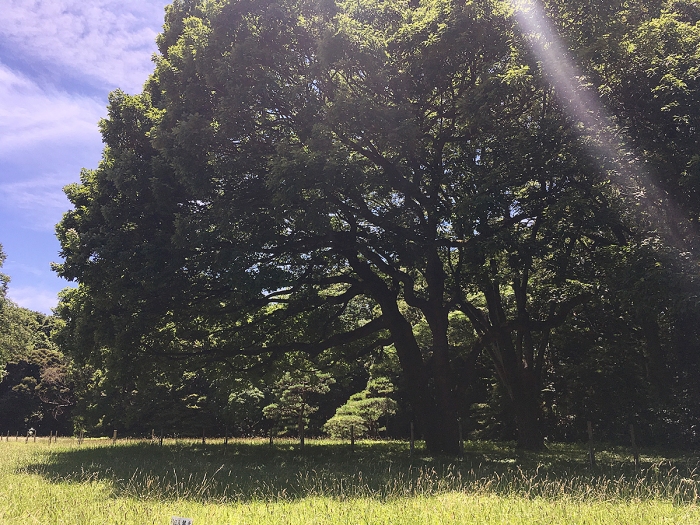
100,000 trees were planted in Meiji Shrine
In Shinto, we believe that gods live among nature and the nature itself is the god. It is very important that shrine is surrounded by forest.
At the time of the Meiji Emperor’s death, it was decided that the shrine dedicated to him should be constructed here and approximately 100,000 trees were donated across the country and planted. To this day, the forest of Meiji Jingu Shrine is symbol of the nation’s spirit and ecologically protecting the busy Tokyo city.
For inquiry:
Japan Oriental Tours: Contact Us
Temple, Palace & Waterfront Day Tour


